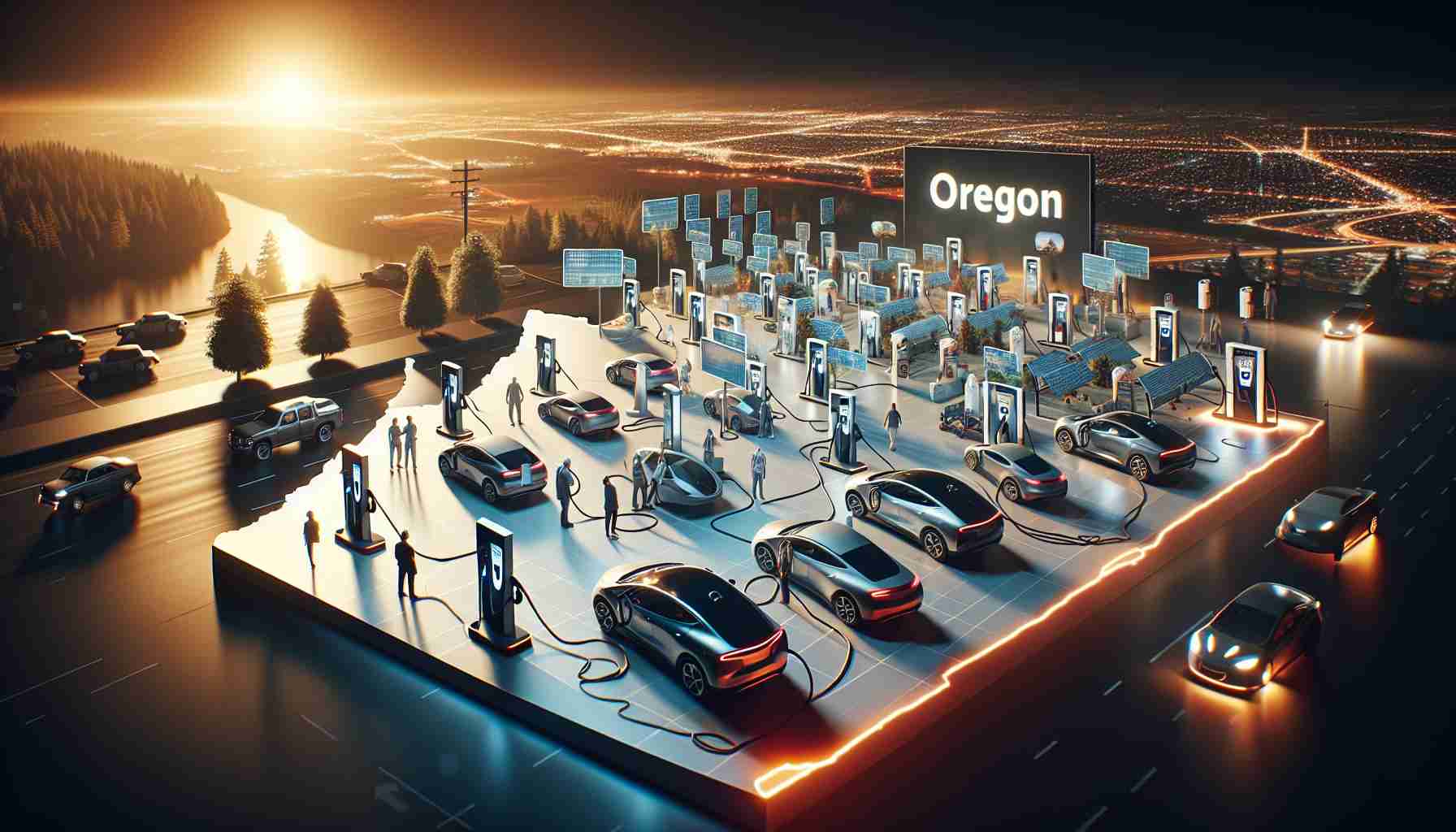In an ambitious move towards sustainability, Oregon is set to expand its public electric vehicle (EV) charging network, with plans to add 460 new charging ports by 2026. This initiative, spearheaded by the Oregon Department of Transportation (ODOT), aims to enhance accessibility for electric vehicle owners statewide.
With these additions, the total number of public EV chargers funded by ODOT will soar to 882. The majority of these ports will be financed through the agency’s Community Charging Rebates program, which focuses on establishing charging stations in apartments, workplaces, and publicly accessible areas, significantly benefiting residents in need.
Currently, ODOT has allocated $4.25 million across the first two rounds of the funding program. Notably, nearly 70% of the second round’s funds have been dedicated to projects in rural and disadvantaged communities. As the momentum builds, the third round of funding is scheduled to open on December 17, offering an additional $2.75 million. Following a recent influx of $10.9 million in federal grants, ODOT is actively strategizing the optimal utilization of these funds.
The rebate program plays a crucial role in covering costs associated with the purchase and installation of Level 2 EV charging stations, which typically take around four hours to facilitate a 100-mile range—ideal for the daily driver. With innovative applications like PlugShare, users can easily locate charging stations throughout Oregon.
Oregon’s Bold Step Towards a Greener Future: Expanding EV Charging Infrastructure
Oregon’s Expansion of Electric Vehicle Charging Network
Oregon is making strides to become a leader in electric vehicle (EV) infrastructure by expanding its public EV charging network. This initiative, led by the Oregon Department of Transportation (ODOT), plans to add 460 new charging ports by 2026, increasing the total to 882 public EV chargers funded by ODOT. This major development reflects Oregon’s commitment to promoting sustainable transportation and meeting the growing demand for EV charging facilities.
Key Features of the Charging Network Expansion
1. Community Charging Rebates Program:
The majority of the new charging ports will be financed through ODOT’s Community Charging Rebates program. This initiative aims to install charging stations in apartments, workplaces, and publicly accessible areas, which is particularly beneficial for residents in underserved areas.
2. Funding Allocation:
ODOT has already allocated $4.25 million across two funding rounds, with a significant focus on enhancing EV infrastructure in rural and disadvantaged communities—with up to 70% of the second round’s funds directed towards these areas.
3. Upcoming Funding Opportunities:
The third funding round is set to open on December 17, offering an additional $2.75 million to projects aimed at increasing accessibility to charging stations across the state.
4. Federal Grants Influence:
Recent federal grants amounting to $10.9 million are expected to bolster ODOT’s strategies for optimizing the use of funds to expand charging infrastructure.
Use Cases and Benefits
– Convenience for Daily Drivers: The expanded network will provide increased access to Level 2 EV charging stations, which can deliver a 100-mile range in about four hours. This setup is highly conducive to everyday drivers who need reliable charging options.
– Environmental Impact: Enhancing the charging infrastructure supports Oregon’s environmental goals by encouraging the adoption of electric vehicles, thereby reducing greenhouse gas emissions.
Insights and Predictions
As more EV users emerge, expanding the charging network will likely enhance EV sales and usage, reflecting a broader trend of increasing reliance on sustainable transportation options. Innovative applications such as PlugShare allow users to locate charging stations throughout Oregon easily, indicating a shifting landscape in transportation technology and infrastructure.
Limitations and Challenges
While the expansion is promising, challenges remain in ensuring that the charging network is widely distributed and accessible to all demographics, particularly in more remote areas. Additionally, ongoing maintenance and upgrading of infrastructure will be crucial to accommodate the expected rise in electric vehicle ownership.
Conclusion
Oregon’s initiative to expand its electric vehicle charging network is not just a critical step towards sustainability but also a potential model for other states aiming to enhance their EV infrastructure. The strategic funding and focus on community accessibility could position Oregon as a leader in the transition towards cleaner, more sustainable transportation solutions.
For more details on sustainability initiatives in Oregon, visit the Oregon state government site.
Stay tuned for updates as Oregon’s efforts to enhance its EV infrastructure continue to unfold.













